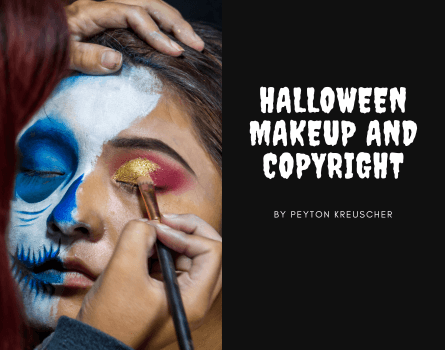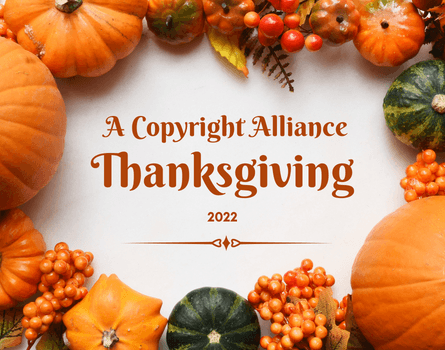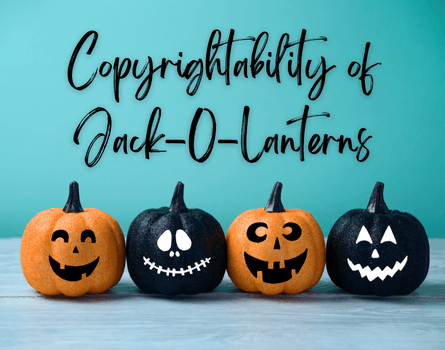As the days grow shorter and the warmth of summer wanes, store aisles give way to a mesmerizing array of candy, costumes, and Halloween décor. Halloween, that bewitching night when shadows come alive, offers a unique opportunity for us to become something otherworldly. But this transformation into creatures of the night is far from simple. Crafting show-stopping Halloween looks often necessitates the artistry of special effects makeup, including intricate face and body paint. The creative individuals behind these designs have risen to prominence in recent years, forging careers by showcasing their talents. Even the world of television has embraced this phenomenon, with shows like Face Off where skilled makeup artists compete to craft creatures akin to those found in science fiction and horror films. Halloween is a day overflowing with creative expression, so how do Halloween makeup and copyright law relate to one another?
History: Where Did the Halloween Costume Tradition Come From?
Halloween finds its origins in the ancient Celtic festival known as Samhain, a celebration that marked the end of summer and the beginning of the harvest season. In Celtic belief, this was a time when spirits roamed the earthly realm, and those who did not dress up in costumes to conceal their identity were at risk of becoming possessed by the visiting spirits.
When these traditions came to America, Halloween evolved into the festive occasion we recognize today. Early Halloween costumes often featured clowns, witches, devils, and ghosts. During the 1920s, homemade painted paper masks were common. However, the burgeoning film industry, with its iconic horror movies like Frankenstein and Dracula, played a pivotal role in shaping Halloween makeup designs. The increased availability of cinematic cosmetics, such as grease paint and scar wax, made it feasible for individuals to replicate beloved monster characters at home.
Thanks to advances in technology and in the beauty industry, illusionist makeup designs have only become more elaborate and realistic looking. Today, Halloween fosters creativity and encourages artistic expression—a principle that aligns with the very essence of copyright law. Thus, the question emerges: Are Halloween makeup designs protected by copyright laws? The answer is, yes! Halloween makeup designs can easily meet copyrightability requirements that make these artistic creations protectable by the Copyright Act.
Halloween Makeup and Copyright Requirements
The evolution of makeup from being used solely as a way to enhance one’s features to being used as an art form begs the question of what makes a certain makeup design protected by copyright law.
Under U.S. copyright law, a work qualifies for copyright protection if it meets two criteria: (1) it must be an “original work of authorship” and (2) it must be “fixed in a tangible medium.” As a threshold inquiry, the work must qualify as copyrightable subject matter under section 102 of the Copyright Act.
The Second Circuit has held that makeup designs can be categorized as a pictorial work under 102(a)(5), which broadly encompasses “two-dimensional and three-dimensional works of fine, graphic, and applied art.” So next, the analysis of the copyrightability of makeup designs would examine whether such a design would meet the main two requirements noted above.
Fixed in a Tangible Medium
According to section 102 of the Copyright Act, a work must be “fixed in any tangible medium of expression.” Although the Act states that works must be “sufficiently permanent,” or last more than a transitory duration, the Copyright Office has clarified that total permanence is not required for fixation and that transitory simply means “something shorter than temporary.” Thus, unless a work “manifests itself so fleetingly that it cannot be copied, perceived, or communicated” the work should be deemed to satisfy the fixation requirement.
As applied to makeup, this suggests that makeup designs would satisfy the fixation requirement because the designs last more than a fleeting moment on the skin. However, there is still debate over whether makeup designs qualify, and courts and the Copyright Office have not directly addressed the matter. Specifically, ongoing debates concern (1) whether the human body is a tangible medium, and (2) whether makeup designs are sufficiently permanent.
Some courts have held that tattoos can satisfy the fixation requirement because they are permanently embedded on the skin. A district court in Ohio concluded that the tattoo designs on NBA players Lebron James, Danny Green, and Tristan Thompson were “fixed once the process of inking the players’ bodies was completed.” Based on these tattoo cases, makeup designs solely fixed on a person’s skin would seem to be sufficient as a tangible medium, though some copyright scholars have expressed doubt that Congress intended to include body parts of live human beings as a tangible medium of expression.
Unlike tattoos, parties have argued that makeup designs don’t last for more than a brief, transitory period because they can easily be smudged or wiped away. How long makeup lasts on the skin depends on a number of factors, including skin type, how the skin is prepped, the chemical properties of the makeup product, and the conditions that the skin is exposed to. Average makeup products should last for 12 hours on your face, but Halloween makeup may involve application methods that extend the lifetime of the makeup, such as using adhesive and layering special powders and creams.
Additionally, even if a Halloween makeup design is removed from a model or actor but is consistently reapplied in the same way for the same purpose, that could still satisfy the fixation requirement. A notable example is the district court case Carrell v. Shubert, where the special effects makeup designs created for the actors in the Broadway production of Cats were deemed “fixed in tangible form on the faces of the Cats actors” even though the makeup was removed each night after the show and different actors would cycle in and out of the roles.
The Second Circuit also had the chance to weigh in on the makeup fixation issue in 2020 in a case where the lower court held that a makeup design was sufficiently fixed on human skin for copyrightability purposes. While the Second Circuit upheld the copyrightability of the makeup design, it interestingly did so on the alternative ground that the design was sufficiently fixed in the form of a physical photograph. The Court noted that such designs are a form of intangible property that can be fixed in any number of tangible mediums of expression, and thus, for copyrightability purposes, the same makeup design can be fixed in multiple mediums at once.
Since makeup designs fulfill the fixation requirement, the next step in the copyrightability inquiry examines whether each makeup design qualifies as an “original work of authorship.”
Original Work of Authorship
The bar for originality is very low, requiring only that the work be independently created and possess a “modicum of creativity.” The U.S. Copyright Office notes in its Compendium that when analyzing the originality of a work, it does not consider the aesthetic value of a work. Consequently, everyday, standard makeup designs, as visually appealing as they may be, typically do not meet the originality standard because they often reflect common artistic styles or are too abstract of an idea of accentuating or hiding certain facial features. However, the originality question becomes more complex when it comes to the intersection of Halloween makeup and copyright, and we can look to various copyright doctrines for guidance.
Merger Doctrine
Indeed, when it comes to depicting Halloween characters like skeletons, there may be inherent copyright limitations because there are only so many ways to depict such characters. Their well-established traits serve as immediate identifiers for each character archetype, and it would be impossible to depict such characters without these traits.
Under the concept in copyright law called the merger doctrine, when there are too few ways to express a particular idea, copyright would not protect that particular expression. For example, any painting of a skeleton will have certain similarities to other paintings of skeletons. All skeletons will have hollowed-out eye sockets, bony teeth, and a lack of a nose because that is what a skeleton consists of. Without these defining characteristics, it is impossible to accurately depict a skeleton, so the idea and expression have thus become merged.
However, this does not mean that every aspect of makeup designs for these characters lacks originality. Copyright law would protect a particular expression of a Halloween character or a monster if it contains tailored, creative additions besides simply the character or monster’s generic characteristics. For example, in Carrell v. Shubert, the cat makeup designs created for the actors in Cats were deemed to possess the “requisite degree of originality.” According to the makeup artist, each design contained specific elements that helped turn human faces catlike, including the placement of various colors and lines sweeping across the actors’ faces. The designer also introduced lines curving out of smudged eyeliner, and messy shading in the character Grizabella to show how she was “full of aging beauty and despair.” So, even when working with characters that may have seemingly limited variations, such as cats, artists can add their own creative elements that could merit copyright protection.
In the Halloween context, painting a plain white skeleton is not original enough on its own, but introducing pink shading and strategically placing pearls in this skeleton makeup design can establish the “modicum of creativity” that meets the originality requirement.
Scènes à Faire Doctrine
The line between creative and commonplace in the context of makeup design can be difficult to draw, particularly when it comes to trope Halloween characters or monsters. Under the scènes à faire doctrine, certain elements of an expression that are common to a particular genre or subject do not receive copyright protection.
Scènes à faire slightly differs from the merger doctrine in that it is still possible to express these characters and meet the originality requirement, even with common characteristics. This is usually because the concept of the characters themselves were made up and don’t exist in nature, so there can be numerous different and minimally creative ways to express a zombie or monster. It often comes down to the degree of originality and the presence of unique, expressive elements that set a creation apart from elements that are expected in relation to a particular character.
Consider Pennywise, for example. At the outset, his features seem generic to all clowns: white face, colorful hair, and a red nose and lips. But the creators made one significant change by extending Pennywise’s lip makeup all the way up through his eyes. This addition, although seemingly slight, demonstrates a creative choice that goes beyond what is normally expected and thus meets the modicum of creativity required for copyright protection.
Moreover, zombies are recognizable by their pale, rotting skin, so these characteristics in a zombie character may not meet the minimally creative threshold. But additional creative elements, like in Tim Burton’s Corpse Bride can result in a very specific expression of a zombie that is sufficiently original. While the Corpse Bride still has a somewhat pale skin tone and rotting skin, the creator’s added elements tailored specifically to her character, such as a wedding dress and veil, blue skin and hair, a singular skeleton arm, dark blue eyelids that mimic eyeshadow, and the placement of scratches on her face where contour would normally be.
Determining what is considered commonplace in a genre or fictional setting is relative to the context of your design, but how do you distinguish creative and common when an artist combines generic elements of multiple characters at once? Consider this artist who created a mermaid-themed skeleton makeup design. While blues, purples, sparkles, and scales are not common to skeletons, they certainly are to mermaids. Is this look creative enough to satisfy the originality requirement? The answer is yes! Although you would be hard-pressed to find a mermaid without scales or oceanic hues, the placement of the colors, scales, and sparkles represents specific creative, artistic choices that would certainly cross the minimally creative threshold for the originality requirement.
Halloween Makeup and Copyright Infringement Issues
Given that Halloween makeup covers the gamut of generic, tropey Halloween monsters to infamous, specific characters, artists creating looks that transform faces into otherworldly characters must be aware of the potential for copyright infringement. In copyright law, direct infringement occurs when a person “reproduces, distributes, displays, or performs a copyrighted work, or prepares a derivative work based on a copyrighted work” without authorization. Infringing individuals must have had access to the original work, and the infringing works must be substantially similar to the original work.
Companies or individual creators hold copyrights in their popular Halloween characters, such as the Corpse Bride, Freddy Krueger, Jason Voorhees, and Pennywise. Any re-creations of these characters using makeup may infringe upon these copyright owners’ exclusive rights to make reproductions of or prepare derivative works based on these characters. This is particularly true in cases where a makeup design which infringes copyright-protected characters are created and used in Halloween commercial activities, like in a haunted house. Notably, however, there are many classic and trope Halloween monsters in the public domain, including Frankenstein’s Monster and Dracula, that makeup artists can recreate without infringing on a copyright owner’s particular expression of such monsters.
Influencer Works and Implied Licenses of Recreating Copyrightable Halloween Makeup Designs
Is it copyright infringement if you follow a makeup tutorial posted online? Many influencer makeup artists post tutorial videos explaining exactly how to mimic their makeup designs at home, profiting from advertisements and endorsement deals featured throughout the videos. While it may seem like following one of these tutorials would be considered copyright infringement, the tutorial could serve as evidence that the artist gave an implied license to copy their work. Even without an implied license, it is highly unlikely an infringement suit would result from online makeup tutorial videos since these artists make their money off views and interactions with their content.
However, not every makeup artist who posts a makeup video online is portraying their own original work. An artist may partner with a copyright owner to re-create a specific character, or they may themselves be infringing on another’s copyrighted design. Thus, it is important to keep in mind the context of the video and do your own research if you plan on recreating makeup designs you find online.
The Copyright Implications of Snapchat, Instagram, and Other Makeup Design Filters
Snapchat filters, allowing users to add transformative overlays to their photographs, have gained popularity throughout the past decade. Since the release of this feature, Snapchat has faced backlash concerning copyright infringement, especially from makeup artists who discovered their unique designs being used as filters without permission.
One makeup artist posted a picture of his own spin on the famous Joker look and an identical design subsequently appeared as a Snapchat filter. Notwithstanding the potential underlying issues surrounding whether the artist had a license to create a derivative work of the iconic Joker character in the first place, these types of Snapchat filters could be direct infringements of the makeup designs that they were based upon. The filters are not just substantially similar to the makeup designs, they are identical reproductions of the design in a digital format. As long as the original makeup design satisfies the copyrightability requirements—sufficiently original and fixed in a tangible medium—filters that re-create the makeup design without authorization are infringing on the makeup artist’s copyright in that design.
Conclusion
What is the takeaway of how Halloween makeup and copyright relate? If you’re a makeup or special effects artist looking to safeguard your imaginative makeup designs, it’s advisable to ensure that your work is preserved in multiple different tangible mediums. This could entail capturing a photograph of the finalized makeup look, recording a video, or transferring the design onto paper. Additionally, ensure you have added enough creative elements that go beyond the features that are generic to a certain character or genre.
Although copyright protection is automatic, creators gain additional benefits from registering their works with the U.S. Copyright Office, including the opportunity to obtain statutory damages and attorneys’ fees when a successful infringement suit is brought in court. By taking these steps, you can establish a stronger foundation for asserting copyright protection over your creations. So, as you delve into the realm of Halloween makeup artistry, remember to document your work creatively and securely, and register with the Copyright Office. Happy haunting!
Check out these creators on Instagram who take Halloween makeup to a whole new level!
If you aren’t already a member of the Copyright Alliance, you can join today by completing our Individual Creator Members membership form! Members gain access to monthly newsletters, educational webinars, and so much more — all for free!





